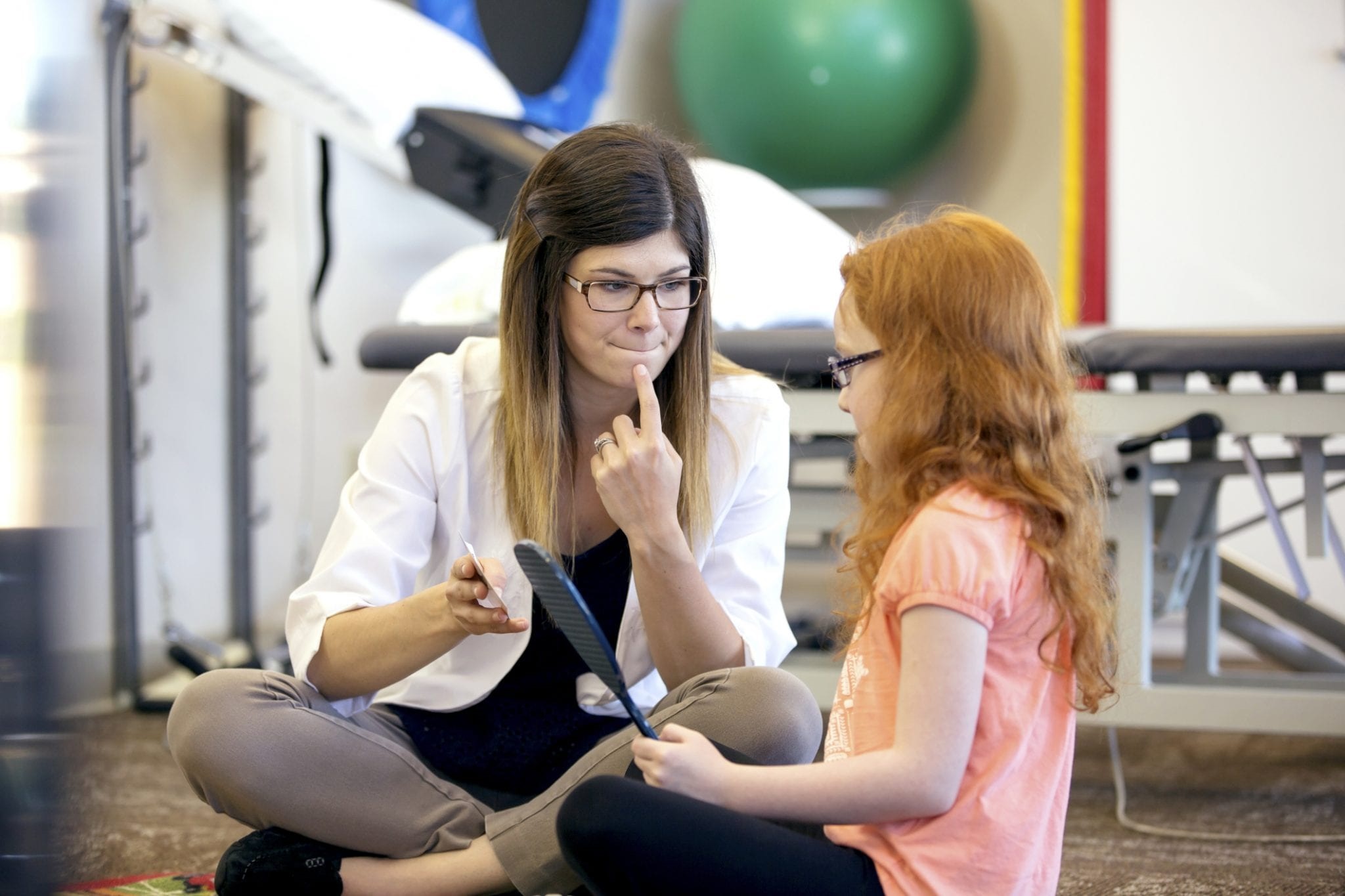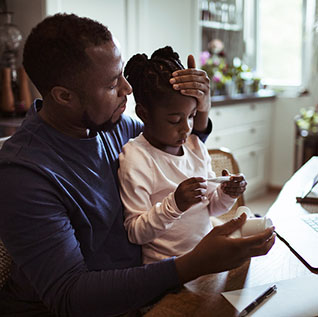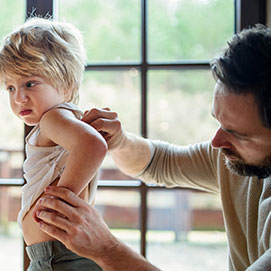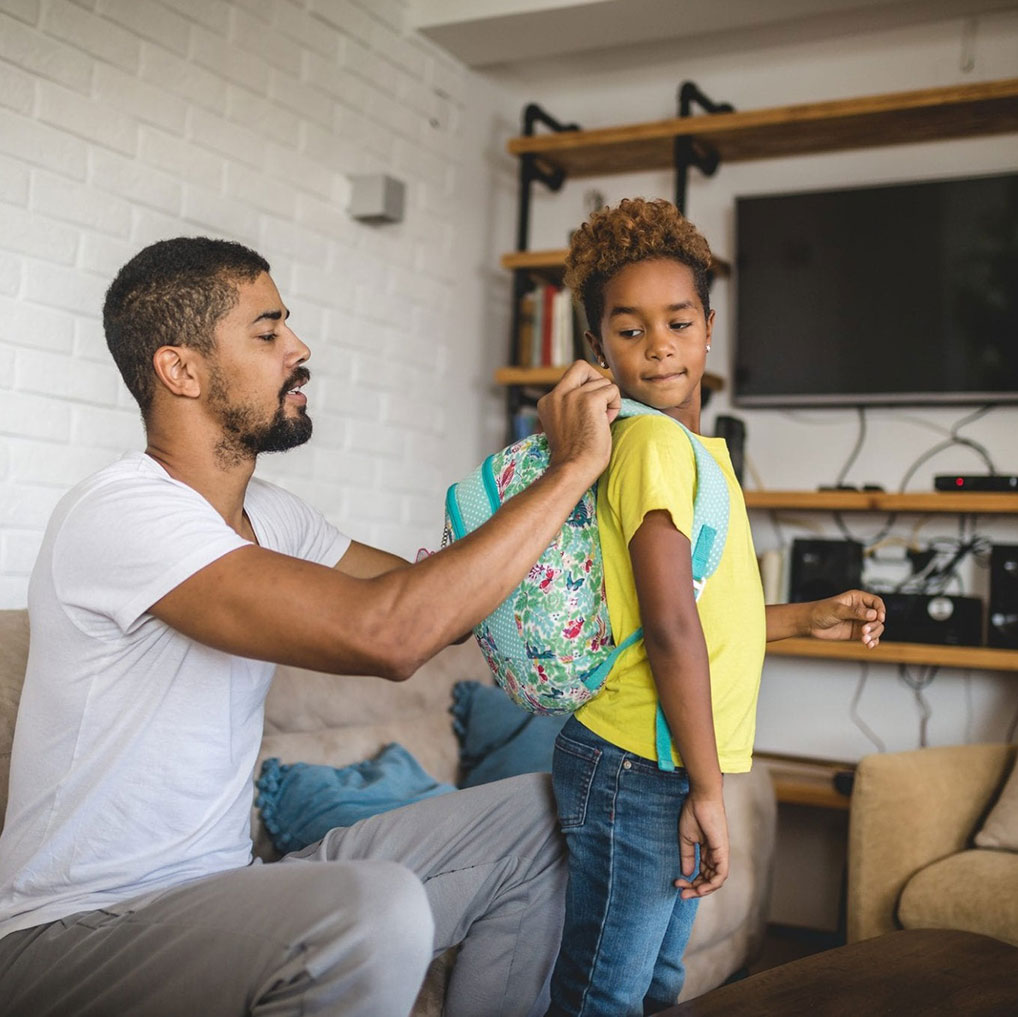Signs Your Child Should See A Speech Therapist

October 14, 2019
Children are back in class and school is in full swing. That means homework, class projects and studying for tests. As the school year progresses, some parents might start to notice their child struggling with assignments and communicating.
“A child might be having a problem with sharing their thoughts and feelings and that can be very frustrating,” says Barbara Miller, a speech therapist at Riverview Medical Center. Knowing when to seek the help of a speech-language pathologist (SLP) can mean the difference between a fulfilling or frustrating educational experience.
Does my child need speech therapy?
It’s important to remember that every child learns at their own rate. To help determine if your child is on the right track, consult these charts shared by the American Speech-Language-Hearing Association which outline when most children should reach each milestone.
The signs that your child might need a speech therapist are subtle, but noticeable. “One early sign that is usually a red-flag is a child that might be able to follow all of your commands but is having trouble verbalizing appropriate responses,” says Miller. Other signs include:
12-15 months:
- Only makes a few sounds.
- Not using gestures like, waving or pointing.
- Has not expressed first words.
18-24 months:
- Grunts and points rather than communicate when they want something.
- Not using two-word combinations frequently.
- Leaving ends off words like “si-dow” instead of sit down.
2-4 years:
- Not putting two- and three-word combinations together.
- Saying fewer than 50 words.
- Mostly unintelligible speech.
4-5 years:
- Repeating the first sounds of words, like "b-b-b-ball" for "ball"
- Unable to follow classroom directions, like “Draw a circle on your paper around something you eat.”
- Repeats sounds or words most of the time.
How does speech therapy work?
Pediatric speech therapy helps treat children with communication challenges, both in how they speak and how they understand communication. Speech therapy also treats oral motor concerns, such as chewing and swallowing, as well as articulation, auditory processing and social skills.
The first step is usually an evaluation with a speech-language pathologist to determine what challenges your child is facing. SLPs will work with you and your child to create a customized plan to help address the issues.
Sessions usually last about a half-hour and it can take as many as 15-20 hours to correct a speech difference. After your initial appointment and diagnosis, the team will work with you to set up a schedule that works best for you and your child.
What is a Speech Disorder?
Speech disorders affect the way a person creates sounds to form words. A person with a speech disorder may have difficulty in producing speech sounds correctly, omitting, connecting or distorting sounds, and the processes used to correctly produce speech.
Many speech disorders can contribute to slower development and trouble learning at school. “There’s a large correlation between speech issues and problems performing at school, because a lot of tasks in the classroom start with being able to communicate,” notes Miller.
What disorders can a speech-language pathologist treat?
- Apraxia
- Autism
- Articulation Disorders
- Cleft Palate
- Developmental Delays
- Dyslexia (Orton Gillingham Therapy)
- Early Language Delays
- Executive Functioning (Attention, Organization)
- Expressive and Receptive Language Disorders
- Feeding Disorders
- Fluency Disorders
- Reading/Writing Difficulties
- Selective Mutism
- Swallowing Disorders
- Tongue Thrust
- Voice Disorders
- Vocal Nodules
How does speech therapy help my child with reading, writing and spelling?
The Orton-Gillingham approach is a multi-sensory approach to teaching that helps a variety of students demonstrating difficulty in learning to read, write, and/or spell.
Each lesson is custom designed for your child and uses three main pathways to help your child learn: Sight, Sound and Movement. Some examples of how this is used in class include:
- Phonogram Flash Cards: The child is asked to see a word on a flash card and say it
- Table Writing: The child writes the word on the table, first looking at the card then not looking. They may write in several textures like sand, modeling clay and paint.
- Word Lists: The child will read through word lists and games to build fluency around reading.
- Arm or Finger Tapping: A student will read and spell out a word while tapping their arm or finger.
“With practice and determination, most child’s speech differences can be resolved,” says Miller. Parents play a critical role in their child’s success. Children who complete the program quickly and have the best results are generally those whose parents have been involved in the therapy. Ask your SLP about how you can help your child at home with exercises and activities to reinforce newly learned skills.
Next Steps & Resources:
- Meet our source: Barbara Miller, M.S., CCC-SLP
- To make an appointment with a doctor near you, call 800-822-8905 or visit our website.
The material provided through HealthU is intended to be used as general information only and should not replace the advice of your physician. Always consult your physician for individual care.
How and When To Get Rid of the Pacifier

If the “binky” helps your child fall asleep more easily at naptime or self-soothe during fussy moments, a pacifier can be a lifesaver during your baby's earliest months.
How to Protect Your Child From Lead

Exposure to lead can cause irreversible neurological damage, which is why all children should be tested.

Should You Switch from Pediatrician to Family Doctor?
You may be wondering when it is appropriate to see a family doctor, or primary care physician.

How to ID Common Kid Bugs
Even a small cough or sneeze from your child may have you wondering, do they have COVID-19?

Common Rashes in Kids & What to Do
While a baby's skin is soft and supple, it’s very common for babies and children to experience rashes and skin irritation.

Relieving Pain From Heavy Backpacks
A backpack that is too heavy for your child can cause back pain. Our pediatric orthopedic experts share how to prevent this issue and alleviate pain.